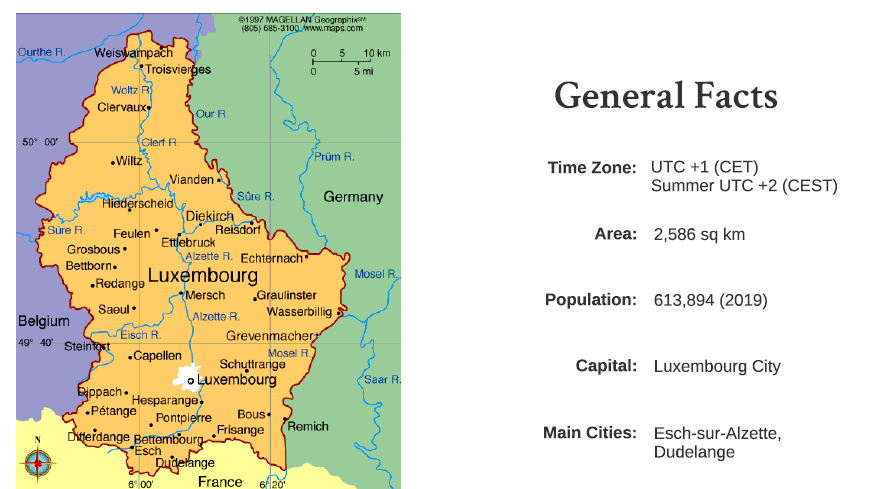Economy
The most important sectors of Luxembourg’s economy in 2018 were the financial and insurance activities (26.5%), wholesale and retail trade, transport, accommodation and food services (18%) and public administration, defence, education, human health and social work activities (16.7%). Currency: EURO GDP Per Capita: 114,704.6 USD (2019) GDP Growth Rate: 2.3% annual change (2019) Gross Domestic Product: 68,847.10 million (2019) GNI Per Capita: 74,400 PPP dollars (2018)
Luxembourg
Foreign Trade
Luxembourg’s main export partners are Germany, France and Belgium while its main import partners are Belgium, Germany and France. Exports: The top exports of Belgium-Luxembourg are Cars ($29.4B), Refined Petroleum ($27.1B), Packaged Medicaments ($23.5B), Diamonds ($16.6B), and Blood, antisera, vaccines, toxins and cultures ($16.2B). Imports: The top imports of Belgium-Luxembourg are Cars ($29.4B), Refined Petroleum ($24B), Packaged Medicaments($16.6B), Diamonds ($16.4B), and Blood, antisera, vaccines, toxins and cultures ($16.3B). Luxembourg exports mostly to Germany ($77.4B), France ($62.3B), Netherlands ($57.5B), United Kingdom ($36.7B), and Italy ($23.8B), and imports mostly from Netherlands ($71.3B), Germany ($59B), France ($42.9B), United States ($32B).
Finances with European Union
Breakdown of Luxembourg’s finances with the EU: Total EU spending in Luxembourg : 2.008 billion Total EU spending as % of Luxembourg gross national income (GNI) : 4.86% Total Luxembourg contribution to the EU budget : 0.357 billion Luxembourg contribution to the EU budget as %of its GNI : 0.86%

